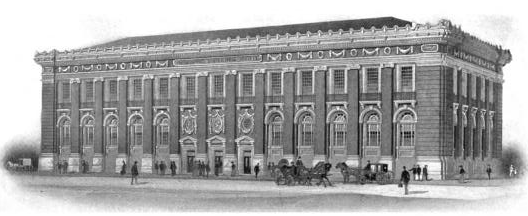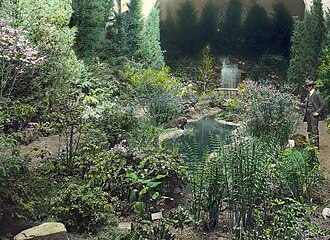
The Boston Public Library is a municipal public library system in Boston, Massachusetts, founded in 1848. The Boston Public Library is also Massachusetts' Library for the Commonwealth, meaning all adult residents of the state are entitled to borrowing and research privileges, and the library receives state funding. The Boston Public Library contains approximately 24 million items, making it the third-largest public library in the United States behind the federal Library of Congress and New York Public Library, which is also privately endowed. In 2014, the library held more than 10,000 programs, all free to the public, and lent 3.7 million materials.

Daniel Chester French was an American sculptor of the late nineteenth and early twentieth centuries. He is best known for his 1874 sculpture The Minute Man in Concord, Massachusetts, and his 1920 monumental statue of Abraham Lincoln in the Lincoln Memorial in Washington, D.C.
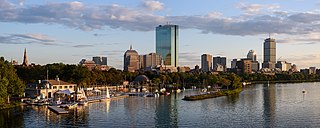
Back Bay is an officially recognized neighborhood of Boston, Massachusetts, built on reclaimed land in the Charles River basin. Construction began in 1859, as the demand for luxury housing exceeded the availability in the city at the time, and the area was fully built by around 1900. It is most famous for its rows of Victorian brownstone homes—considered one of the best preserved examples of 19th-century urban design in the United States—as well as numerous architecturally significant individual buildings, and cultural institutions such as the Boston Public Library, and Boston Architectural College. Initially conceived as a residential-only area, commercial buildings were permitted from around 1890, and Back Bay now features many office buildings, including the John Hancock Tower, Boston's tallest skyscraper. It is also considered a fashionable shopping destination and home to several major hotels.

Copley Square, is a public square in Boston's Back Bay neighborhood, bounded by Boylston Street, Clarendon Street, St. James Avenue, and Dartmouth Street. The square is named for painter John Singleton Copley. Prior to 1883 it was known as Art Square due to its many cultural institutions, some of which remain today.

Richard Morris Hunt was an American architect of the nineteenth century and an eminent figure in the history of architecture of the United States. He helped shape New York City with his designs for the 1902 entrance façade and Great Hall of the Metropolitan Museum of Art, the pedestal of the Statue of Liberty, and many Fifth Avenue mansions since destroyed.

The Museum of Fine Arts is an art museum in Boston, Massachusetts, United States. It is the 20th-largest art museum in the world, measured by public gallery area. It contains 8,161 paintings and more than 450,000 works of art, making it one of the most comprehensive collections in the Americas. With more than 1.2 million visitors a year, it is the 79th–most visited art museum in the world as of 2022.

The Public Garden, also known as Boston Public Garden, is a large park in the heart of Boston, Massachusetts, adjacent to Boston Common. It is a part of the Emerald Necklace system of parks and is bounded by Charles Street and Boston Common to the east, Beacon Street and Beacon Hill to the north, Arlington Street and Back Bay to the west, and Boylston Street to the south. The Public Garden was the first public botanical garden in America.

Huntington Avenue is a thoroughfare in the city of Boston, Massachusetts, beginning at Copley Square and continuing west through the Back Bay, Fenway, Longwood, and Mission Hill neighborhoods. It is signed as Massachusetts Route 9. A section of Huntington Avenue has been officially designated the Avenue of the Arts by the city of Boston.
The Massachusetts Horticultural Society, sometimes abbreviated to MassHort, is an American horticultural society based in Massachusetts. It describes itself as the oldest formally organized horticultural institution in the United States. In its mission statement, the society dedicates itself to encouraging the science and practice of horticulture and developing the public's enjoyment, appreciation, and understanding of plants and the environment. As of 2014, it had some 5,000 members.
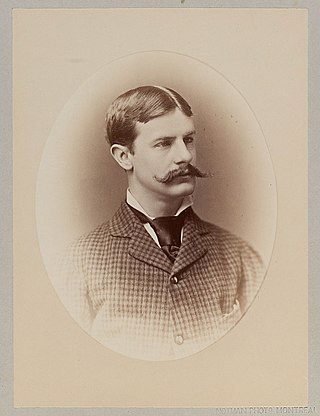
Edmund March Wheelwright was one of New England's most important architects in the late nineteenth and early twentieth centuries, and served as city architect for Boston, Massachusetts from 1891 to 1895.

Martin Milmore (1844–1883) was an American sculptor.

The Francis Parkman House is a National Historic Landmark at 50 Chestnut Street, on Beacon Hill in Boston, Massachusetts. Speculated to be designed by Cornelius Coolidge and built in 1824, it is one of a series of fine brick townhouses on Beacon Hill. Its significance lies in its ownership and occupancy by noted historian and horticulturalist Francis Parkman (1823–1893) from 1865 until his death. While living here, Parkman produced a significant portion of his landmark work, France and England in North America, a multi-volume epic history recounting the conflict for control of North America in the 17th and 18th centuries.
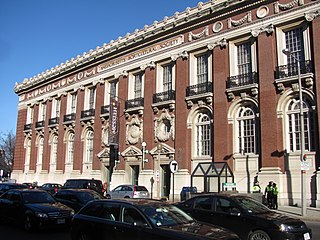
Symphony and Horticultural Halls are historic buildings at the corner of Massachusetts and Huntington Avenues in the Fenway–Kenmore neighborhood of Boston, Massachusetts. The halls were listed as a pair on the National Register of Historic Places in 1975. Symphony Hall was designated a National Historic Landmark in 1999.

The H. H. Richardson Historic District of North Easton is a National Historic Landmark District in the village of North Easton in Easton, Massachusetts. It consists of five buildings designed by noted 19th-century architect Henry Hobson Richardson, and The Rockery, a war memorial designed by Frederick Law Olmsted. It was declared a National Historic Landmark in 1987.

Charles Brigham was an American architect based in Boston, Massachusetts.

Henry Van Brunt FAIA was an American architect and architectural writer.
This article is a timeline of the history of the city of Boston, Massachusetts, USA.

Chickering Hall (1901–1912) was an auditorium in Boston, Massachusetts, located on Huntington Avenue in the Back Bay. It stood adjacent to Horticultural Hall. Tenants included the Emerson College of Oratory and D.M. Shooshan's "Ladies' and Gents' Cafe." In 1912 it became the St. James Theatre, and later the Uptown Theatre. The building existed until 1963, when it was demolished.

Horticultural Hall (1865–1901) of Boston, Massachusetts, was the headquarters of the Massachusetts Horticultural Society in the later 19th century. It stood at no.100-102 Tremont Street, at the corner of Bromfield Street, opposite the Granary Burying Ground. Architects Gridley J.F. Bryant and Arthur Gilman designed the building. Sculptor Martin Milmore created horticulturally-themed statuary for the building's exterior: "three ancient Roman goddesses ... Ceres, goddess of agriculture; Flora, goddess of flowers; and Pomona, goddess of fruit trees." In the 1880s: "the ground floor [was] occupied by stores; the second story by the Library Room of the society and a hall for the weekly exhibitions; and the upper story by a large and elegant hall used ... at the annual and other important exhibitions. Both of these halls [were] often used for concerts and the better class of entertainments. The society's library, comprising over 4,000 volumes, [was] the most valuable collection of horticultural works in the United States. The halls [were] adorned with portraits and busts of the presidents, founders, and benefactors of the society."
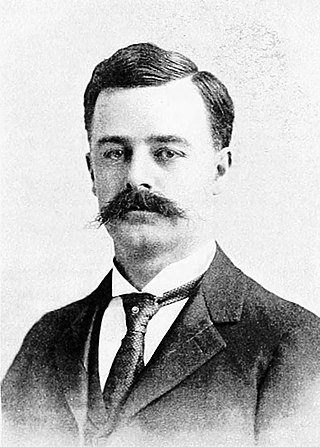
Albert Cameron Burrage, known as A. C. Burrage, was an industrialist, attorney, horticulturist and philanthropist from the United States.


